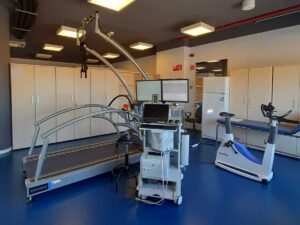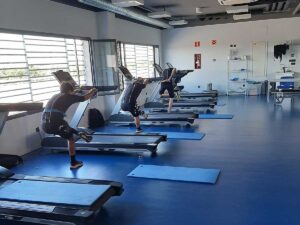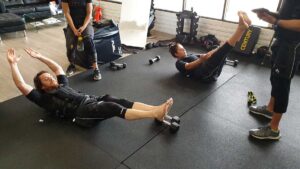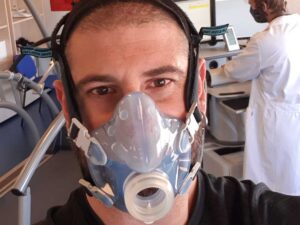Electrostimulation (NMES) can recruit high-threshold motor units and improve glycolysis, the combination of NMES and low intensity voluntary exercise would induce aerobic and anaerobic energy consumptions and this type of exercise could be more efficient and effective than conventional exercise. Therefore, the objective of this study was to investigate the metabolic responses and muscle fatigue during the use of whole body electrostimulation (WB-EMS), voluntary exercise and the combination of both methods (voluntary exercise + WB-EMS).
Thirteen healthy young men participated in this study. Subjects did not regularly undertake resistance or strength training or participate in competitive sporting events.
The subjects came to the laboratory three times, separated by intervals of at least 48 hours. On the three days, blood lactate concentration and maximum voluntary contraction (MVC) were measured before and after a given exercise, that is, With WB-EMS (E), voluntary aerobic exercise (V) or their combination (VE), and spirometry was performed during exercise. On the first day, the subjects performed V and the familiarization and determination of the intensity of WB-EMS were carried out. On the second and third day, E or VE were applied randomly and each exercise program was carried out for 15 minutes.
Voluntary exercise consisted of a 15-minute full-body calisthenics workout in groups V and VE. On the other hand, the wave parameters used with WB-EMS were a biphasic, quadrangular and compensated wave, with a frequency of 20 Hz and a pulse width of 100 µs. The duty cycle was 4 seconds of electrical impulse and 4 seconds of rest. Also, a frequency of 2 Hz was applied during warm-up and resting times. The intensity was applied at a motor threshold without reaching the pain threshold. During the intervention of the EV group, the contraction and relaxation times of WB-EMS (4sg/4sg) were synchronized with voluntary exercise.
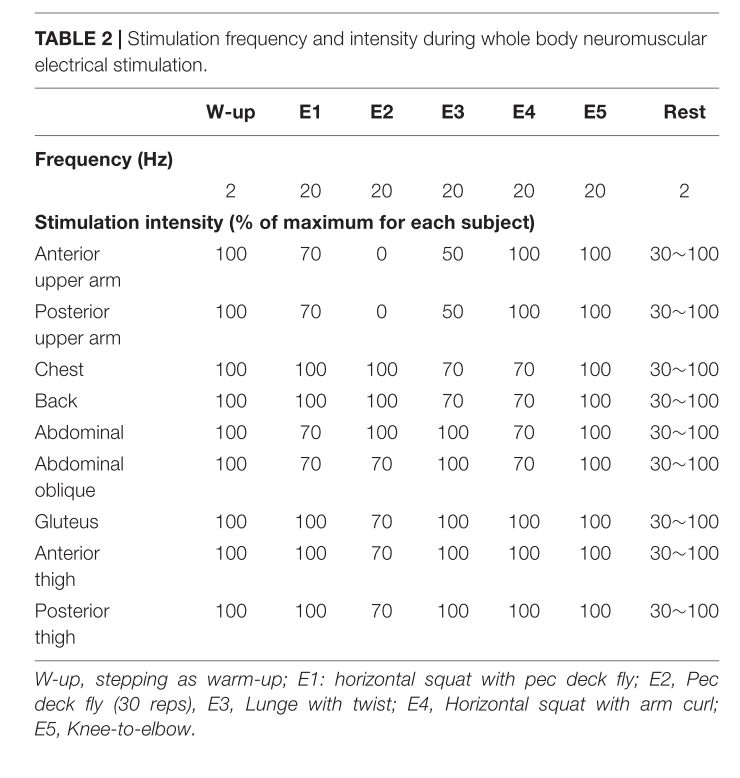
When analyzing the results of this study, energy expenditure and VO2 in relation to body mass in group VE were significantly higher than in groups V and E. Respiratory gas exchange ratio (RER) during groups E and VE were higher than group V, and the blood lactate concentration of group VE was significantly higher than groups E and V.
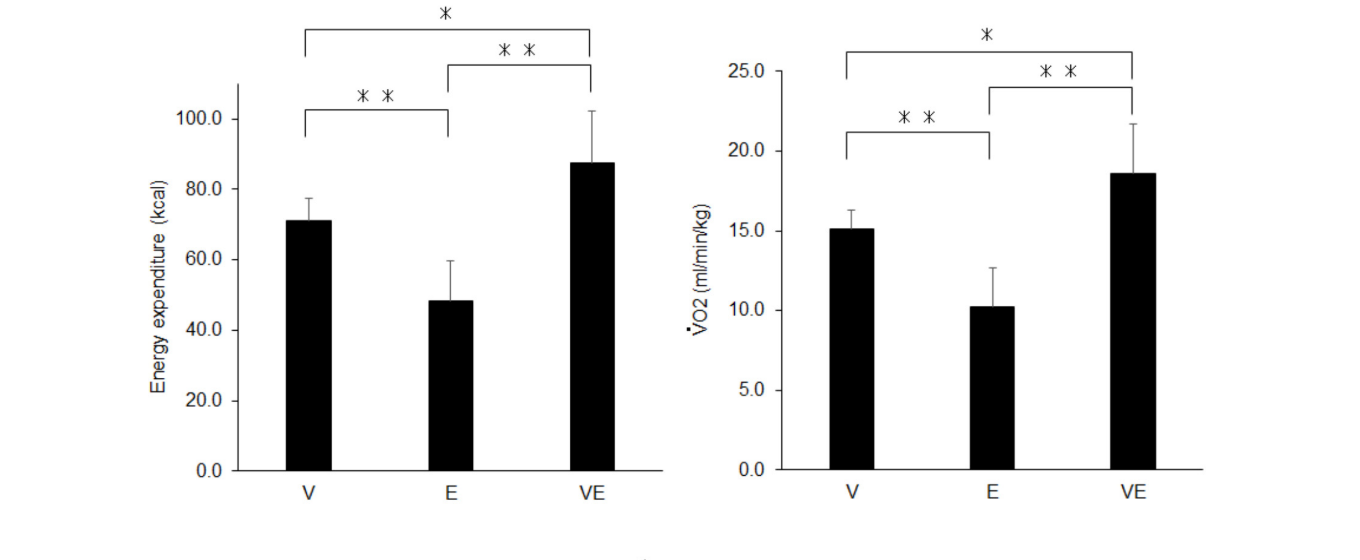
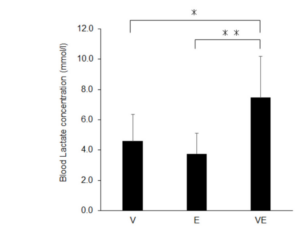
CONCLUSION
These results suggest that the combination of voluntary exercise and WB-EMS can enhance metabolic response to a level equivalent to high intensity exercise under the net physiological load of low-medium intensity exercise. This type of training methodology would be useful for people who cannot perform high intensity exercise that requires a high metabolic threshold such as patients with type 2 diabetes mellitus or older adults.
BIBLIOGRAPHY
- Kohei Watanabe, Takahiro Yoshida, Tomoki Ishikawa, Shuhei Kawade and Toshio Moritani.. (2019). Effect of the Combination of Whole-Body Neuromuscular Electrical Stimulation and Voluntary Exercise on Metabolic Responses in Human.. Frontiers in Physiology, 10, 52-59.


